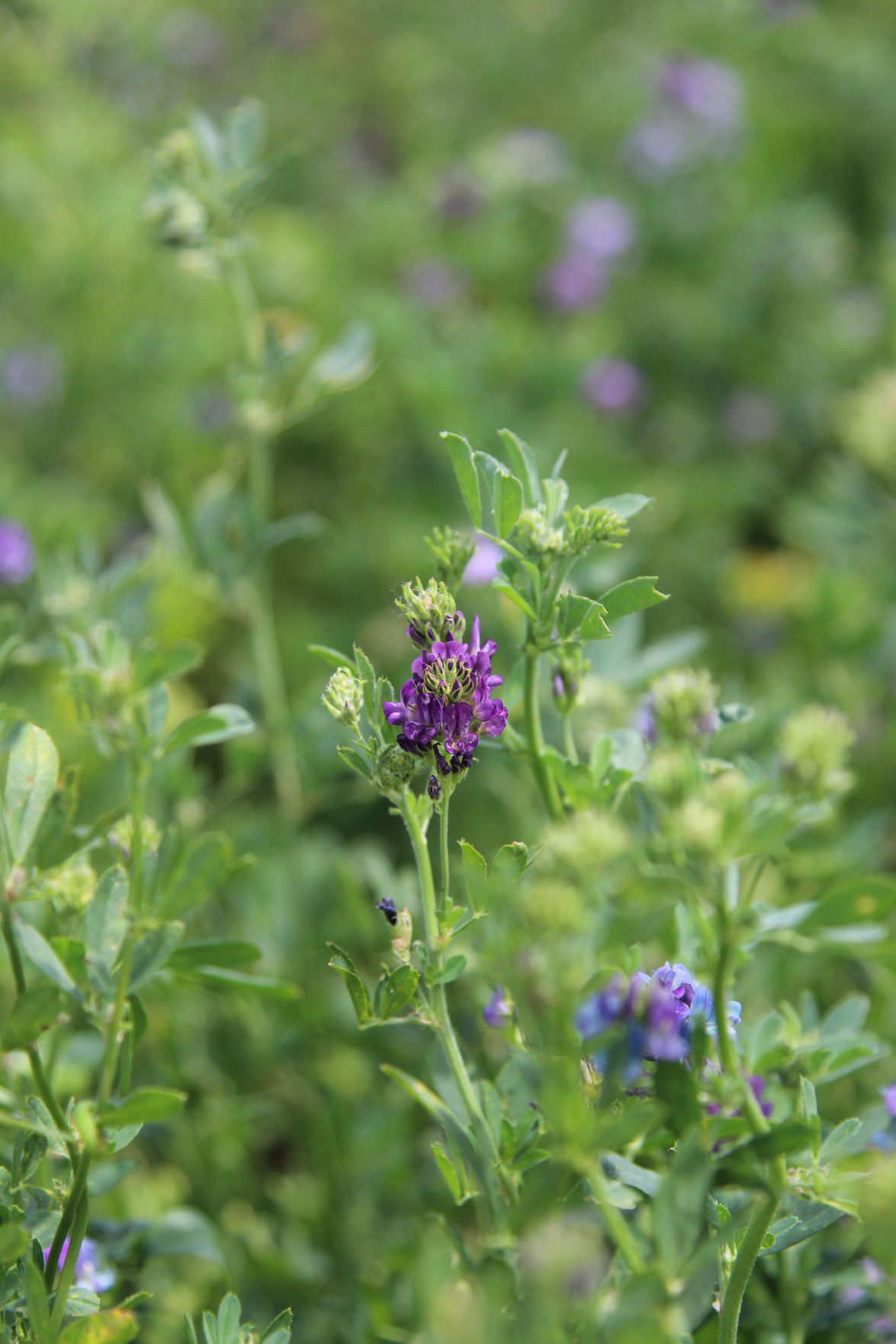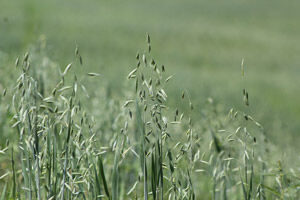Alfalfa will quit growing after the first hard freeze (when temperatures reach below 26°F), which in Kansas occurs on average around October 15 but can be as early as October 1 or as late as November 1. The decision should be weather-based at this time of the year because the timing of the last two cuttings impacts the winter survival and productivity of the stand in the following year.
Before fall dormancy, the last cutting should be made based on expected crown regrowth rather than one-tenth bloom because of the decreasing photoperiod. The last cutting should be made so there will be 8 to 12 inches of foliage, or 4 to 6 weeks of growth time, before the first killing frost. This should allow adequate time for replenishment of root reserves. This means the second to final cutting should occur around early September. As the days get cooler and shorter, drying hay in a timely manner can become risky for the last cutting. Though tempting to bale before it’s properly dry, heat damage, mold, or spontaneous combustion fires occur commonly in fine-stemmed, high-quality, tightly packed bales. The additional factor of moisture makes the ideal environment for heat-producing microbes.
At this stage of the growing season, alfalfa plants need to store enough carbohydrates to survive the winter. If root reserves are not replenished adequately before the first killing freeze in the fall, the stand is more susceptible to winter damage than it would be normally. That could result in slower greenup and early growth next spring and, in some cases, stand loss due to winter kill. The potential of the alfalfa crop to grow new foliar tissue in the spring is greater with greater root reserves in the fall; thus, root reserves this fall are the main driver of next crop’s yield and quality. Varieties are continually being selected for winter hardiness, so varieties today are less susceptible than varieties of yesterday to winter injury, but it is still important to manage varieties for best success. Otherwise, spring growth can be reduced, and stand loss can occur.
The final cutting should occur right after the first killing freeze before too many leaves have dropped. Producers should be prepared to enter the fields as soon as soil moisture conditions allow. After a killing freeze, the remaining forage (if any) can be hayed safely. However, the producer should act quickly because the leaves will soon drop off.

Consider soil sampling alfalfa fields now
Late fall is also a great time of the year to collect soil samples from alfalfa fields. This timing allows for an accurate assessment of available soil nutrients and provides enough time to make nutrient management decisions before the crop starts growing in the spring. Key soil tests include pH, phosphorus, and potassium, and to a lesser extent, sulfur and boron. In particular, potassium is highly related to winter survival, so it’s important to make sure to have an optimum range of potassium in the soil before entering the winter. When sampling for immobile nutrients, the sampling depth should be six inches, while mobile nutrients (sulfur) should be sampled to 24 inches. Based on the soil test, a fertility program can be established to ensure nutrient replenishment and maintain hayfield productivity. To submit soil samples to the K-State Research and Extension Soil Testing Laboratory, see this website: https://www.agronomy.k-state.edu/outreach-and-services/soil-testing-lab/.
John Holman, Cropping Systems Agronomist, Southwest Research-Extension Center
[email protected]
Romulo Lollato, Wheat and Forages Specialist
[email protected]
Tina Sullivan, Northeast Area Agronomist
[email protected]




